|
C.71. AIDS lipodystrophy and anti-proteases: Molecular homology of HIV-1 Gag proteolytic site with ADipokinetic Hormone (ADH) Présentation orale au 13° EACS à Belgrade ,Serbie le 13/10/2011
TRAN Guy Mong Ky *1, *2 ( mkg_tran@yahoo.fr); Adrien CAPRANI *1; Laurent GERBAUD *2
Background One of the most frequent anti-proteases side effects is metabolic syndrome (insulin resistance, hyperglycemia, diabetes) and dyslipidemia with lipodystrophy. This mysterious complication remains unexplained until now. It has no direct link with protease, or proteolytic processes, as it concerns specifically the lipid and glucidic metabolism, not the protidic metabolism. The rationale of the mechanism of action of Protease Inhibitor (PI) is probably indirect, but how can inhibition of peptidic proteolysis interfere with production of hypertriglyceridemia and hyperglycemia? Methods There are examples of known classical molecular mimicry between drugs and peptides:
The justification of the methodology used here is the molecular mimicry between PI and the dipeptide Phenylalanine-Proline (Phe-Pro, FP); PI are only an industrial chemical design by Docking and modification of the dipeptide PI. Instead of studying PI, we studied the dipeptide FP, which is exactly the same. So the best method to study PI is to analyse FP containing Amino Acid (AA) sequences. Alignment of amino acid sequences: 1. Manually, by coloring the amino acids, and 2. Completed by Basic Local Alignment Search Tool Protein (BLASTP) logiciel automatical computer research, with the query of HIV-1 proteolysis site (FP containing sequences) on Homo Sapiens. We centered on the HIV-1 Gag protease cleavage site FP (or FL), between a Phenylalanine F and a Proline P (or a Leucine L= non cyclized Proline). Abbreviations used: A=Ala=Alanine C=Cys=Cysteine D= Asp=Aspartic Acid E=Glu= Glutamic Acid F=Phe =Phenylalanine G=Gly=Glycine H=His=Histidine I=Ileu=Isoleucine K= Lys=Lysine L=Leu=Leucine M=Met=Methionine N= Asp= Asparagine P=Pro=Proline Q= Gln= Glutamine pQ= pyroQ= <Glu= pyroGlutamic Acid (5-OxoProline) R= Arg= Arginine S= Ser= Serine T=Thr= Thréonine V=Val=Valine W= Trp=Tryptophane Y= Tyr=Tyrosine Z= Q or E Thus one can align D with N, because D is Aspartic Acid and N is Asparagine. Or S (Serine) and T (Threonine), because they are hydroxylated. P and L are interchangeable, because P is a cyclised form of L. Y (Tyrosine) is the OH-form of F (Phenylalanine). GMO MON 863 is an ADH In an another domain, the security of human alimentation, we found that Monsanto Genetically Modified Organism (GMO) corn MON 863 Bacillus thuringiensis Bt Cry3Bb toxin QVFGEEWGY (Gln-Val-Phe-Gly-Glu-Glu-Trp-Gly-Tyr), which induces in rats a metabolic syndrome, with hyperglycemia and hypertriglyceridemia (Seralini GE, Int J Biol Sci 2009), is an ADipokinetic Hormone-like (ADH) pQVTFTPDWGY (Gade G, Physiol Rev 1997), which induced also in insects sugar elevation, lipid mobilisation, hyperdiglyceridemia and lipolysis in the fat body:
Europe has … authorized MON 863! We have also published 2 other works on the FP proteolysis motif: One on AIDS thrombocytopenia physiopathology (Tran M.K.G. et al., 2002 ISHEID Conf. Toulon, France) and the other on Hemorragic Dengue Fever [the so-called enhancing antibodies] and Avian Influenza thrombocytopenia (Tran MK.G. et al., ISHEID Conf. , 2010, Marseille, France). In parallel to these data on FP, we searched in ADH a motif FP-like (or a very similar motif FTP) identical to the HIV-1 Gag cleavage site FP (or FL; L and P are equivalent; some rare strains of HIV-1 contain FL). Results In the list of 32 insect ADH (Gäde G, Physiol Rev 1997), the 10th ADH (Blattella Germanicus) pQVNFTPGWGT is nicely aligned with the cleavage site ↓ between the proteins p7 and p1 of HIV-1 Gag QVNFLGKIW.
The cleavage ↓is between the Phenylalanine F of QVNF of p7 and the Leucine of LGKIWPS of p1. The HIV-1 strain C.BR.O4.O4BR013 has a Valine V, the other strains have an Alanine A (Kuiken C., Los Alamos HIV sequences, 2009). The Proline P of FTP (ADH) is aligned with the Leucine L of FL (Gag). Insect ADH function seems, for its hyperglycemic effect, to be related phylogenetically to human Glucagon family. We looked for the human equivalent of ADH: Functionally, Glucagon [AAHO5278] was the best candidate, and its sequence analysis reveals that there is a F separated by 2 residues from a W, forming a doublet F-W in three dimensional structure (alpha helix). This doublet F-W is conserved in the Glucagon family at the COOH-terminus, and was aligned with the same doublet F-W of ADH family (F separated by a β-turn TPG in 3D structure), and also with HIV-1 uncleaved Gag:
ADIPOKINETIC HORMONE FAMILY ALIGNMENT
Now, if we align a chimera of 3 Glucagons with a chimera of 32 ADH, in conserving the doublet F-W, all residues are identical, except the valine and the proline in ADH, both replaced by a gap.
Aspartic Acid D 21 is in the Glucagon active site (Unson C.G., 1994). Glucagon with deletion of residues 22-26 (sequence FVQWL containing the doublet F-W) has only 0006% of the potency of receptor binding compared to Glucagon (Frandsen E.K., 1981). Thus the Glucagon COOH-terminus is important for biological activity. The second messenger Cyclic AMP is involved in the action of the locust ADH (Asher C., Gen Comp Endocrinol 1984, 55: 167-73) and the cAMP production occurs via a stimulatory G-protein (Vroemen S.F., Mol Cell Endocrinol 1995, 107: 165-71). Locust fat body requires extra-cellular Ca++ for maximum glycogen phosphorylase activation by ADH (Van Marrewijk W.J.A., Insect Biochem 1991, 21: 375-80). So the comparison of ADH with Glucagon is striking and not limited to AA sequence homology. However, as Glucagon decreased triglycerides levels, it cannot account for all the effects of ADH and PI, such as hypertriglyceridemia.
ADipokinetic Hormone (ADH) from praying mantis (Empusa Pennata)
Zubrzycki I.Z. and Gäde G, Bioch Biophys Res Comm 1994, 198: 228-235 DiacylGlycerol O-AcylTransferase 1 DiacylGlycerol O-AcylTransferase 1 [O75907],
The biochemical reaction catalyzed is: Acyl-CoA + 1,2- DiacylGlycerol = CoA + TriacylGlycerol (or Triglyceride), thus may explain the hypertriglyceridemia induced by PI. Liver Phosphorylase Kinase α2 We screened by BLASTP a second HIV-1 proteolysis cleavage site located between protease and p66, p55 Reverse Transcriptase (RT): Sequence TLNFPISPI, centered by the proteolysis motif FP; we found a homology with human liver Phosphorylase Kinase α2 (AA 561-567) [AAH14036]:
This peptide match may explain the hyperglycemic effect of PI, as the hyperglycemic action of Glucagon is mediated by Phosphorylase Kinase α2: The chain activation is Glucagon (or Epinephrine) → The glycogenolysis is: Mutations of the large regulatory α subunit of Phosphorylase Kinase causes liver Glycogenosis and cirrhosis (Carrière C. BBA 2008, 1782: 664-70). An homology exists between voltage-dependent Calcium Ca++ channel and HIV-1 Gag proteolysis site. PI (nelfinavir)-induced persistent diarrhea (frequency 50%) is efficiently treated by Calcium carbonate (Turner M.J., 2004) which indicates a role for Calcium: This diarrhea may be explained by PI (nelfinavir) targeting to Calcium channel. Phosphorylation of liver Phosphorylase is also dependent on Calcium. Mechanisms of action There are many possible hypothesis: First, an auto-immune hypothesis: Cross-reactive auto-antibodies directed against the common epitope of non cleaved Gag and the auto-immune target protein (for example platelet gpIIIa IIb): The auto-antibodies destroyed the platelets and induced thrombocytopenia in AIDS hemorrhagic manifestations (Tran M.K.G., ISHEID Conf., Toulon 2002, France, PPB7). This is also the same mechanism in Dengue Hemorragic Fever (auto-antibodies against platelet gpIIIaIIb are the so-called « enhancing » antibodies) and Avian Influenza hemorrhagic manifestations (Tran M.K.G., ISHEID Conf., 2010, Marseille, France). The motif FP is very immunogen because it contains a Proline which is protruding outside and inducing antibodies production. The affinity of anti-platelet antibodies is very high (Kd=10-9M) (Nardi M.A., PNAS, 1997, 94: 7589-94).
However, whereas anti-platelet auto-antibodies are demonstrated in HIV-1 infection, there are no data until now on the search and demonstration of any auto-antibodies against Glucagon, Acetyltransferase or Phosphorylase Kinase α2 (the α2 subunit restrains kinase activity). Furthermore, auto-antibodies against Glucagon would inhibit (not stimulate) glycemia and auto-antibodies against Acetyltransferase would inhibit (not stimulate) triglyceridemia production. Thus this hypothesis is not valid. Second, a non immunologic hypothesis: Antibodies are not responsible. PI blocks the cleavage of HIV-1 Gag: HIV-1 Gag is immature, uncleaved at the FP site as normally in 2 parts, then it mimics the enzyme and its biological function: In favor of this concept is that the very short (only 8-10 residues long, but containing a Tryptophan W8) insect peptide Adipokinetic Hormone ADH sequence pQVNFTPGWGT is highly homologous to uncleaved HIV-1 Gag QVNFLGKIWPS.
Despite this shortness, ADH is completely fulfilled with very specific metabolic functions like inducing hyperglycemia and diglyceridemia, namely the PI-induced metabolic syndrome, in insect. Very probably, the Tryptophane W8 is the ADH active site residue. Third, PI blocks a human [or many human proteases (proteasome)] that normally destroys and eliminates the enzymes by cleaving them at the FP motif: Proteasome has been linked to Tubby-like protein 4 (TULP4), an ubiquitin ligase. Tubby itself is responsible of obesity in mice. Fourth, PI has a direct action on adipocytes, by blocking preadipocyte differentiation (Zhang B., J Clin Endocrinol Metab 1999, 84: 4274-7; Wentworth J.M., J Endocrinol 2000, 164: R7-R10). This is more relevant to lipoatrophy. Conclusion The protease inhibitors prevent the cleavage of HIV-1 Gag and allow the immature, uncleaved virion to mimic the short insect ADipokinetic Hormone (ADH), explaining the metabolic syndrome, hypertriglyceridemia and lipodystrophy in AIDS patients treated with protease inhibitors (PI). In human, the equivalent of insect adipokinetic hormone is glucagon itself, as glucagon induces hyperglycemia, and the AA sequence homology is restricted to the glucagon COOH-terminus implicated in receptor binding and to an aspartate D 21 in adenylate cyclase activation. The transduction of ADH and Glucagon were the same: Stimulatory G-protein, adenylate cyclase, second messenger cAMP production and Calcium-dependent activation of glycogen phosphorylase. Additionnally, there may be also an enzyme downstream of glucagon in the metabolic pathway: phosphorylase kinase alpha 2 subunit, homologous to uncleaved Gag. A second possible mechanism of PI action may be uncleaved Gag mimicry with human acyltransferase, inducing hypertriglyceridemia. Some, happily very rare, PI side effects seemed also to be explained rationally: Cirrhosis with portal hypertension, as far as a mutation of phosphorylase kinase alpha 2 subunit is responsible of a form of glycogenosis type 6 with liver cirrhosis. A possible hypothesis explaining lipodystrophia may reside in the (PI-induced) uncleaved Gag mimicry with Tubby-Like Protein 4 (TULP4), a new member of Tubby family, because Tubby mutation or loss of function is responsible of mouse adult progressive obesity with resistance to insulin. However, TULP4 itself is a too recently discovered enzyme, its precise function is unknown and needs more profound future studies to conclude in this direction (the same than Tubby: fat and hydrate metabolism). Interestingly, human TULP4 (ubiquitin ligase) is implicated in proteolysis (proteasome function), thus is a good candidate for PI target and side effects. PI (nelfinavir)-induced persistent diarrhea (incidence frequency 50%) is efficiently treated by Calcium carbonate (Turner M.J., 2004) which suggests a role for Calcium: As an homology exists between voltage-dependent Calcium Ca++ channel and HIV-1 Gag proteolysis site, this diarrhea could be explained by PI (nelfinavir) targeting to Calcium channel. Phosphorylation of liver Phosphorylase is also dependent on Calcium. In the future, may be other treatment acting on Calcium channels can be discovered by this research avenue. As very practical consequence is to avoid Genetically Modified Organism (GMO) consumption, because Monsanto GMO MON 863 contains ADH sequence in its Bacillus thuringiensis (Bt) toxin Cry3Bb (TRAN M.K.G., unpublished), thus inducing the same metabolic syndrome than PI: So it is advised to consume biological, not transgenic alimentary food. More generally, our data confirm the Seralini’s work on rodents, demonstrating that GMO is inducing metabolic syndrome, hyperglycemia and hypertriglyceridemia, as well as liver disease. The obesity epidemics in the western world which is overwhelmed with occult GMO containing food may be explained by this GMO effect on glucidic and lipidic metabolism: Obesity, diabetes, hypertriglyceridemia, lipohypertrophy, hepatic steatosis, metabolic syndrome. Europe must legally block Monsanto GMO for this reason, and wait a more safe new GMO generation devoid of nocive Bt toxin. Chinese government must also stop autorizing production of GMO transgenic rice. ARE PIs PROTECTIVE AGAINST THROMBOCYTOPENIA and constitute a new treatment of Dengue Hemorragic Fever and Avian Influenza? A unexpected consequence of the mimicry between platelet gpIIIaIIb and uncleaved HIV-1 Gag is the possibility that PI would inhibit, as an hapten, the auto-antibodies directed against the platelets, avoiding their destruction and severe thrombocytopenia, such as in AIDS, Dengue Hemorragic Fever or Avian Influenza. Patients under PI present very rarely or not at all thrombocytopenia. This complication has been described, but their observed rarity or complete absence would mean 2 things: First hypothesis: Whether PI are PROTECTIVE against thrombocytopenia, by lowering its frequency in AIDS. The frequency reported is so low that it is not statistically significant. For some PI, it has never been reported any thrombocytopenia. Second hypothesis: Or, on the contrary, PI are the culprit of AIDS PI-induced thrombocytopenia. In this case HIV-1 uncleaved Gag would mimic platelet gpIIIaIIb and act as a competitive inhibitor, thus inducing thrombocytopenia. But if it was the case, the frequency would be much more elevated, as frequent as the metabolic syndrome, hyperglycemia and hypertriglyceridemia, which obviously is not the case. The distinction is of importance, because in the first case (a protection conferred by PI), which is the most probable, then PI are a new avenue of treatment of Dengue Hemorragic Fever and Avian Influenza. May be the degree of neutralisation of anti-platelet auto-antibodies by PI would depend on each PI. Affinity of each PI on the auto-antibodies is different, depending on the PI structure. The PI having the structure mimicking the most the sequence 53-SIEFPVS-59 of gpIIIaIIb may be the most powerful candidate.
Design of better PIs These data could help the design (docking) of better anti-proteases without glucidic and lipidic complications. It is better to avoid to synthetize some PIs: Those mimicking the uncleaved HIV-1 Gag at sites looking like Glucagon, phosphorylase kinase alpha 2 or acetyltransferase. It may be possible to mimic, for example, other cleavage site, for example Met-Met. However, this does not give the certitude of avoiding any side effects. IN FACT THE BEST PI IS CONTAINED IN THE PLANT TERMINALIA CHEBULA RETZ (ARURA or Myrobolan). Arura is non toxic and has a clinical experience of 2500 years Arura (in combination as Triphala Mix) has many anti-HIV-1 properties:
So Major Companies have a prototype of PI in ARURA which is efficient and non toxic, that they can mimic. For the clinician What can be done when PI induces side effects, is to use a combination of the following treatments:
This combination allows the PI to be stopped and replaced until side effects disappear and virus sensibility come back. It has no toxicity. A VACCINE CAN BE DESIGNED ON THE BASIS OF THE SAME TARGETS THAN THE EFFICIENT TREATMENT Against :
|

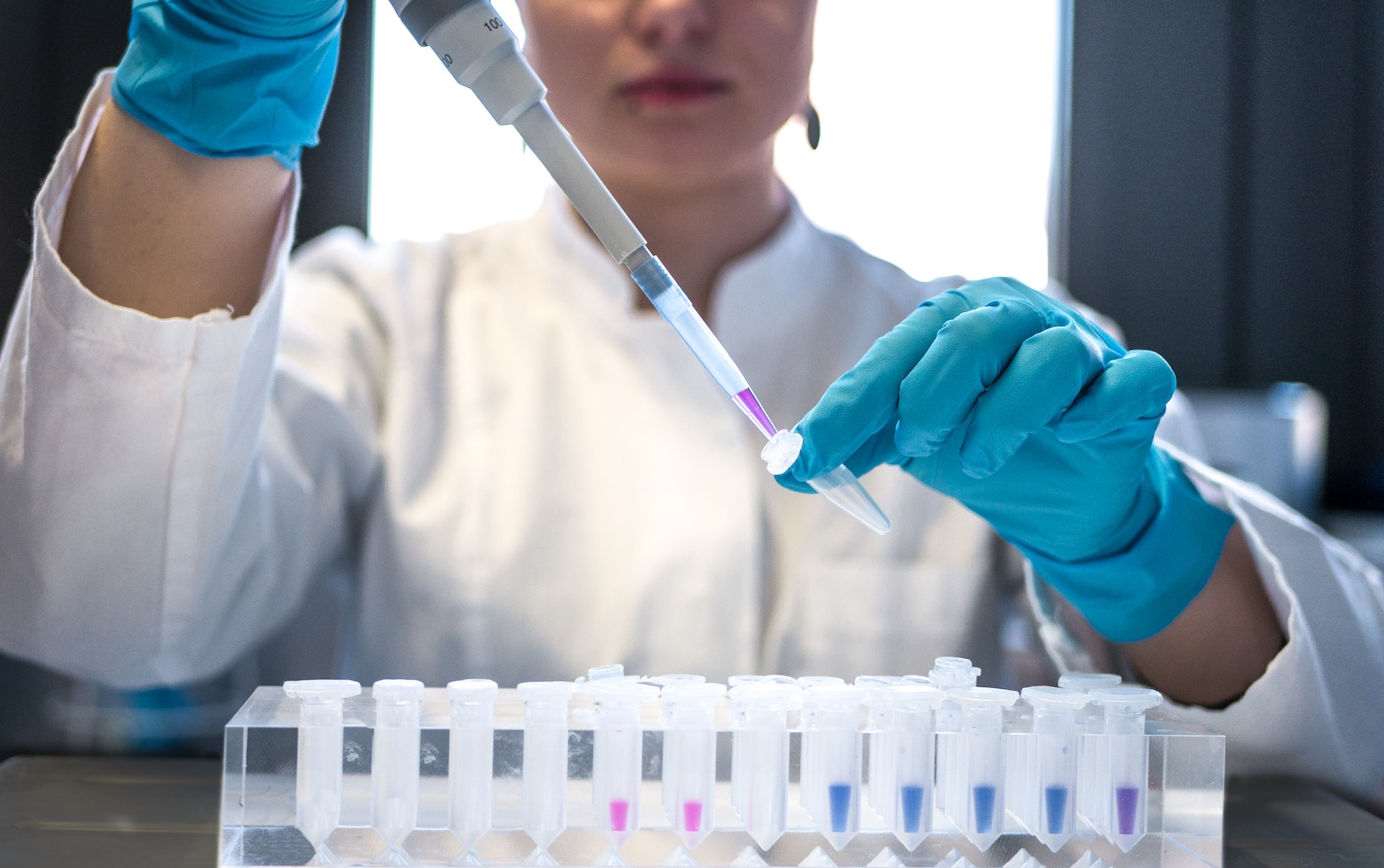



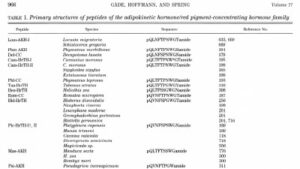
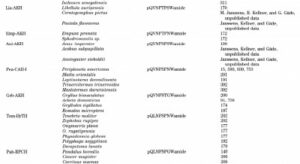

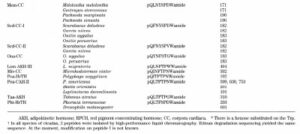
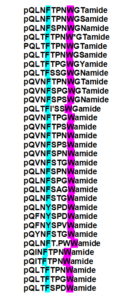

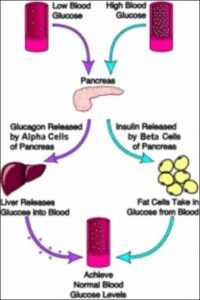
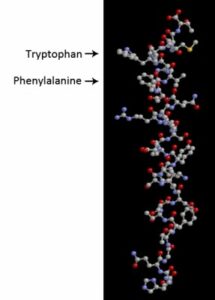
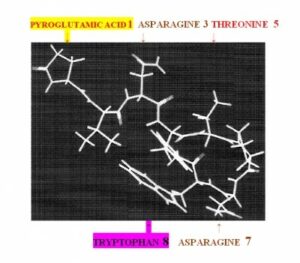





Laisser un commentaire